This is a continuation of our trip that started in Austria. Click here to read about our visit to that country.
After our stay in the Wachau, we drove back to Vienna where I had arranged with Taste Hungary (http://tastehungary.com/) to pick us up and drive us to Budapest, stopping in the Sopron wine region along the way. Taste Hungary is owned by Gábor and Carolyn Bánfalvi, and both were great in making sure Charlie and I had a wonderful first visit to Hungary. Our stay in Hungary included a great visit to Tokaj, where Gábor led the way in our visits to three pincészets (or wineries; you will also see “pince” or “birtok” to describe a winery). Gábor also arranged an “old Aszús” tasting at his wine shop in Budapest – the Tasting Table (http://tastehungary.com/tasting-table-shop/). Upon returning to Vienna, we stopped in the Etyek and Pannonhalma wine regions in Hungary. Our guide to and from Vienna and Budapest, and while in Budapest, was Virág Lastóczki. Virág is a great, personable and knowledgeable guide. Charlie and I highly recommend you contact Gábor if you are interested in the wines from Tokaj and the other wine regions in Hungary, and we highly recommend Taste Hungary and Virág to lead you through Budapest and Hungary.
Budapest is a vibrant city with some beautiful buildings and vistas. We enjoyed our stay in Budapest and Hungary, and when you think that the roads and modern infrastructure were practically all built after 1989, the progress is amazing.
While in Budapest, we took one of Taste Hungary’s Culinary Walks with Virág, and that is a great way to experience the food culture of Budapest. The highlight of our visit to Budapest was the private Danube river cruise (really a nice-sized speed boat) that Taste Hungary had arranged for us one evening. To cruise and speed along the Danube in the evening, and then at night – with all of the buildings lit up – was remarkable.
Now on to our wine tastings –
In the Sopron wine region –
Our first stop in Hungary was in the Sopron wine region where we visited Jandl Borászat [Jandl Winery] in Fertőrákos (http://www.jandl.hu/). Our visit and tasting (with a cheese and charcuterie plate) was with owner/winemaker Kálmán Jandl (or Jandl Kálmán in Hungarian, as the last name is always written first). The Jandl family has been making wine in Sopron for six generations. Wines tasted:
2014 Kékfrankos Rosé – the Kékfrankos grape is called the Blaufränkisch grape in Austria, salmon colored, nice, smooth, the best wine we tasted; buy
2013 Kékfrankos – a simple wine
2013 Missio – a Soproni Kékfrankos, or selection of the best grapes, dry, ok
2012 Cabernet Franc – much more robust, but dryer on the palate
2012 Soproni Shiraz – the vines came from the Côte-Rôtie, but when I asked Mr. Jandl why he called this wine a Shiraz, not a Syrah, his answer was that this wine was more fruity, jammy than a typical syrah; this wine was more like a shiraz
2012 Sorproni Merlot – just ok
In the Tokaj –
To understand the wines of Tokaj (Tokaj is the region, and Tokaji is the wine produced in the region – both pronounced “Toe kye”), you have to understand the history of Hungary. By the end of the 17th century Tokaji was considered one of the world’s greatest wines. Royal decrees were issued to safeguard quality, and the first ever known system of classified growths was devised in Tokaj in the mid-17th century. The 18th and 19th centuries saw the wines from Tokaj reach their greatest height. Imperial courts throughout Europe and Russia purchased and drank Tokaji. King Louis XIV called the sweet wines of Tokaj – vinum regum, rex vinorum – wine of kings, king of wines.
Yet, after such a glorious past, the region was decimated by two World Wars and the advent of communism. Under communism, winemaking was centralized into a single state-owned holding, and quantity, not quality, became the objective. When communism fell in 1989, the winemakers of Tokaj had to build their vineyards and their winemaking from scratch. As several people told us, when you lose 40-50 years of history, you don’t just lose years, you lose the link to your past and the knowledge that is passed from generation to generation.
The year 1989 saw the beginning of a vigorous renaissance in the Tokaj. With the influx of substantial money from foreign investors, the replanting of vineyards and the building of new facilities started. Tokaj began its path back to its past glory. We visited three pincészets in Tokaj, and each one is helping shape the future of this region.
But, before I describe our visits, a short introduction to the wines of Tokaj might be helpful. Sweet Tokaji wines are typically a blend of Furmint, Hárslevelű and Sárga Muskotály grapes. A base dry white wine is first made (usually with Furmint grapes), then this base wine is mixed with Aszú berries (botrytised, shriveled grapes that are picked berry by berry). During harvest, it can take up to 30 passes in the vineyards to pick the botrytised gapes at the optimal time. These botrytised grapes were originally picked and placed into 20 liter wooden tubs called puttony. Traditionally, the concentration (sweetness) of the Tokaji wines was defined by the number of puttony added to the base. Today, the “puttonoys” is based on the amount of the residual sugar in the final wine. The higher the puttynos, the higher the sugar concentration. The top Aszús are 5 or 6 Puttynos.
Szamorodni wines are made from grapes picked at the end of the harvest. Whole clusters (not the berry by berry picking done for Aszús) are used to make szamorodni, and the quantity of botrytised grapes in the cluster will determine the sweetness of the wine. There can be a dry szamorodni if the whole clusters do not have many botrytised grapes.
Eszencia (or Essencia) is the richest and rarest of Tokaj’s sweet wines (although it cannot technically be called a wine because of its low alcohol level). Eszencia is made from the free run juice of the Aszú berries. The sugar concentration of Eszencia typically ranges from 500-700 g/L, but in certain years can be as high as 900 g/L.
Now on the our visits –
Demeter Zoltán in Tokaj (http://www.demeterzoltan.hu/) – I had asked Gábor to see if he could arrange a visit with István Szepsy and/or Zoltán Demeter. Remember last names are written first in Hungarian, but for my blog, their given names are first (but the name of Zoltán’s pincészet, and the name on the wine label, is Demeter Zoltán). Mr. Szepsy could not meet with us, but Gábor was successful in arranging a visit with Zoltán.
As Zoltán said “even though we had 500 years of history in making wine in Tokaj, we had to rediscover the vines, the wine and the quality.” Zoltán appears to be in large part, a one-man show. Zoltán told us that he wants to have control over every aspect of his winemaking, because only he is accountable for the wine, only he fully understands the vision for his wines. Zoltán is widely regarded as one of Hungary’s most accomplished winemakers. Zoltán and István Szepsy were the first ones to make quality dry white wines from the traditional grapes used to make the famous and historical Tokaji sweet wines. Throughout our stay in Hungary, Charlie and I very much enjoyed the dry Furmints, and if you have never tasted this wine, try one and see what you think!
Wines tasted:
2013 Veres – a dry Furmint, crisp, refreshing, but bone dry, closure is a glass stopper (the closure used by Zoltán on all of his dry wines), good concentration; buy
2013 Oszhegy – made with the Sárga Muskotály (or yellow muscat) grapes, some spice and saltiness
2013 Boda Vielles Vignes – a dry Furmint made from 100 year old vines, pears, some stone fruits
2010 Eszter – a Tokaji cuvee (a főbor; called a szamarodni by other Tokaj pincészets) made with 60% Hárslevelű and 40% Sárga Muskotály, per Zoltán “a beautiful wine,” honey with some citrus, dried apricot, good acidity; buy
Tokaji Aszú 2007 Holdvolgy (6 puttonyos) – a single vineyard aszú, 215 g/L of residual sugar, cinnamon, dried apricots, sweet but a good level of acidity
Tokaji Aszú 2008 (6 puttonyos) – 305g/L of residual sugar, honey colored, dried apricots, good acidity; buy
Hudácskó Pincészet in Bodrogkisfalud (http://hudacsko-pince.hu/index-en.html) – we had a wonderful visit with Anita Hudácskó that included a home-cooked traditional Hungarian meal paired with Hudácskó wines. Anita made the best roasted potatoes that Charlie and I have ever eaten!
Anita Hudácskó in the cellars of Hudácskó Pincészet
We drank several wines with our lunch, but our favorites (buy wines) were:
2013 Hárslevelű – a little sweet with good acidity; buy
2013 Lapis dűlő (or vineyard) – a late harvest wine, sweet with good acidity, very enjoyable; buy
2006 Szamorodni – another very nice sweet wine with good acidity; buy
2007 Aszú (6 puttonyos) – honey on the nose and palate, good acidity; buy
We also drank the 2013 Sárga Muskotály, 2007 Szamorodni (dry), 2013 Furmint Sátorhegy, 2013 Furmint Lapis, 2013 Katalin Cuvée and 2003 Eszencia.
Erzsébet Pince in Tokaj (http://erzsebetpince.hu/eng/) – a wonderful visit and tasting with Hajnalka (Hajni) Prácser. Hajni is the daughter of the winery’s founder, Erzsébet Prácser, and together with her brother, Miklos, now run Erzsébet Pince. Of special interest are the cellars that were built in the 1700’s, and that formely served as the fermenting and aging cellars for the tsars and tsarinas of Russia. I had originally asked Gábor to arrange a tasting of Erzsébet Pince’s full portfolio of dry wines, as well as a vertical tasting of their Aszús (11 dry wines and 7 aszús). I don’t know what I was thinking! We wisely decided to scale back on the dry wines.
Wines tasted:
2011 Zafír dűlő (vineyard) – tight as first, but opened up with some air and warmth, elegant but with good structure
2011 Betsek dűlő – made with 95% hárslevelű, per Hajni “very harmonious, together,” “great character, great minerality,” good structure and acidity, a very nice wine; buy
2013 Király dűlő – a dry furmint, more aromatic, peaches
2012 Király dűlő – I preferred the 2013
2013 Aszú (6 puttynos) – honey, concentrated
2010 Aszú (6 puttynos) – sweet with good acidity, floral, good balance, concentrated; buy
2008 Aszú (5 puttynos) – the oak comes through
2002 Aszú (5 puttynos) – softer, per Hajni “more sauternes style,” “in a perfect state, harmonious;” buy
2003 Aszúeszencia – this category has more than 6 puttynos, but no longer exists; spicy, tangerine, dried apricots; buy
1999 Aszú (5 puttynos) – sherry colored, with a sherry nose, dry finish
1993 Aszú (5 puttynos) – their first vintage, dark like a madeira, good acidity, some smokiness, spicy as opposed to sweet; buy
In the Etyek wine region –
Hernyák Birtok in Etyek (http://www.hernyak.hu/eng.html) – a very nice visit and tasting (with a cheese and charcuterie plate) with Valéria Hernyák. We tasted several wines, but our favorite (buy) wine was the 2014 Cuvée 2091 (2091 is the city code for Etyek).
In the Pannonhalma wine region –
Pannonhalma Abbey Winery (Apátsági Pincészet) (http://www.pannonhalmibor.com/) and Viator restaurant (http://viator.co.hu/en/) in Győr – we had a fantastic lunch at Viator, paired with 5 wines (4 whites and1 red) made by the Abbey. Viator is housed in a very modern building at the base of the Abbey, and takes a modern approach to Hungarian food and ingredients. This was the best meal we had in Hungary, and we would highly recommend it!
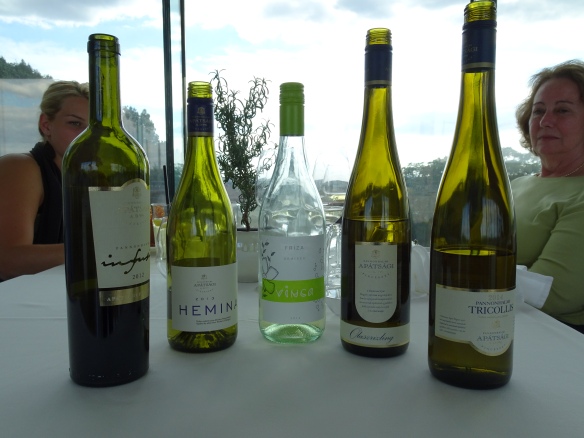
the wines of Pannonhalma Abbey Winery (Apátsági Pincészet) that we tasted during our lunch at Viator
Special Tastings in Budapest –
As I mentioned earlier, Charlie and I had a fantastic adventure on the Danube one evening. Since we were not able to meet with István Szepsy, I had asked Gábor to select some Szepsy wines for our Danube River cruise. Gábor selected the 2013 Úrágya (a dry furmint), the 2013 Szent Tamás (a dry furmint), the 2009 Szamorodni and the 2007 Aszú (6 puttonyos). All four of these wines were great, and all four were buy wines! After drinking his wines, it is clear why Szepsy wines receive the very highest accolades.
Our final – and spectacular – tasting in Budapest was a special “old Aszús” tasting that Gábor put together for Charlie and me at his wine shop, the Tasting Table. This tasting (with foie gras, bleu cheese and charcuterie) included single vineyard and single varietal Aszús, as well as a 1956 Aszú from Oremus. Wine tasted:
2001 Hétszőlő Azsú Hárslevelű (5 puttonyos)
1999 Hétszőlő Aszú Muskotalyos (6 puttonyos)
2002 Disznókő Aszú Hetedik Zeta (6 puttonyos)
1992 Disznókő Aszú (5 puttonyos)
1975 Oremus Aszú (5 puttonyos)
1972 Oremus Aszú (5 puttonyos)
1956 Oremus Aszú (5 puttonyos)
My favorites were the 1972, 1956 and 1999. Gábor used the Coravin to pour these 7 old Aszús, so we were able to pack the bottles after the tasting, and bring them home to enjoy over the next few months. If you are ever in Budapest, check out the Tasting Table, as all of these old Aszús, as well as a wide selection of other Hungarian wines, are available to purchase.
Practicalities –
We stayed at the Four Seasons Gresham Palace in Budapest (http://www.fourseasons.com/budapest/), and I would highly recommend it.
The traffic in Budapest can become a huge traffic jam. Roads and bridges (including the Chain Bridge) can be closed for the day, with little or no notice. So, what should be a short taxi ride can turn into a very long taxi ride.
Although Hungary is in the European Union, its currency is not the Euro. Rather, Hungary’s official currency is the Forint, designated as Ft or HUF.
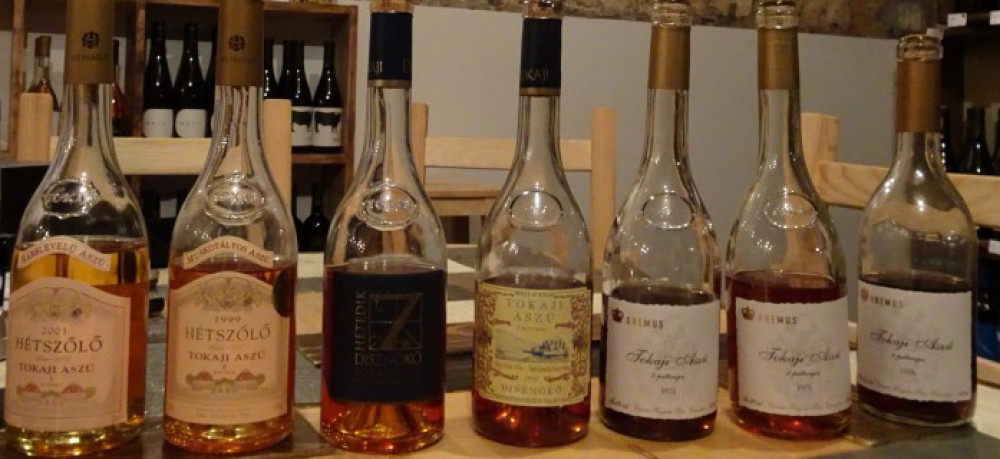
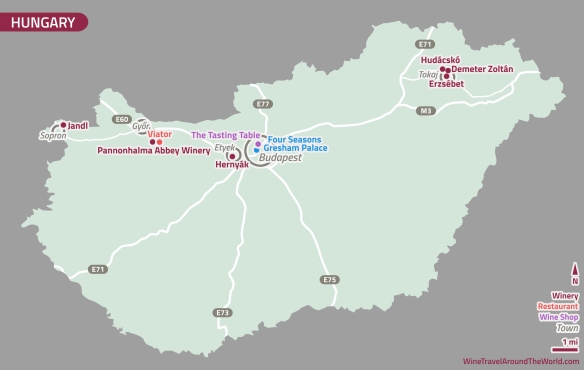
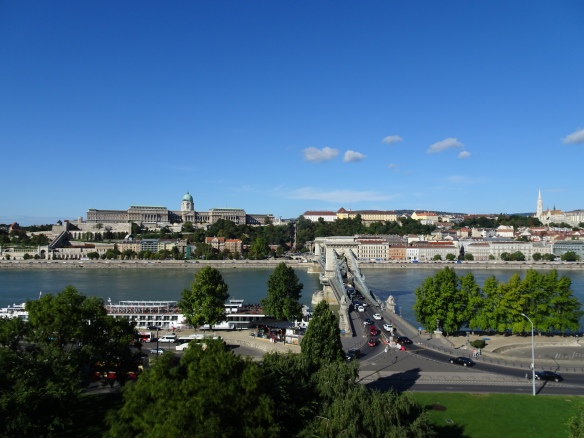
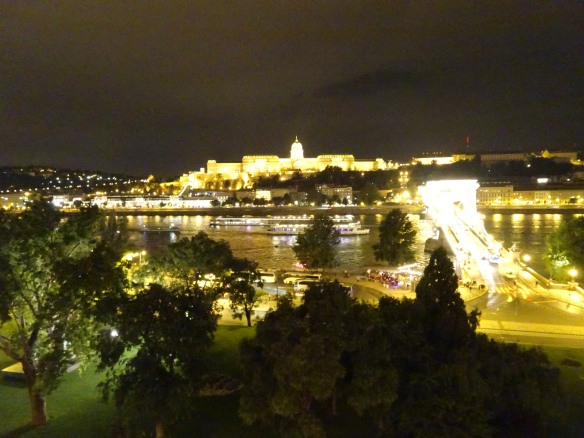
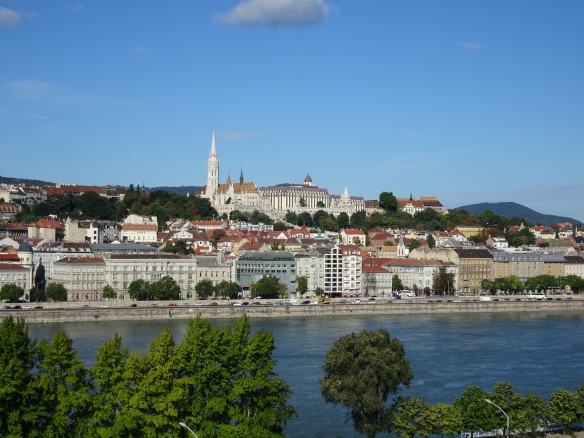
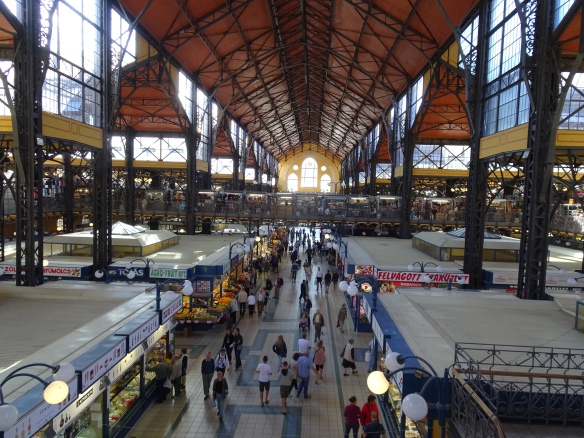
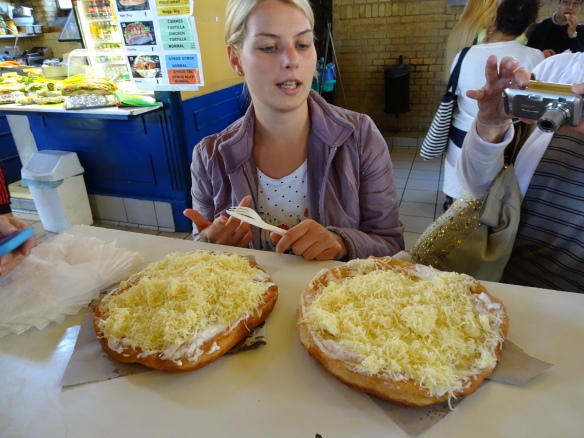
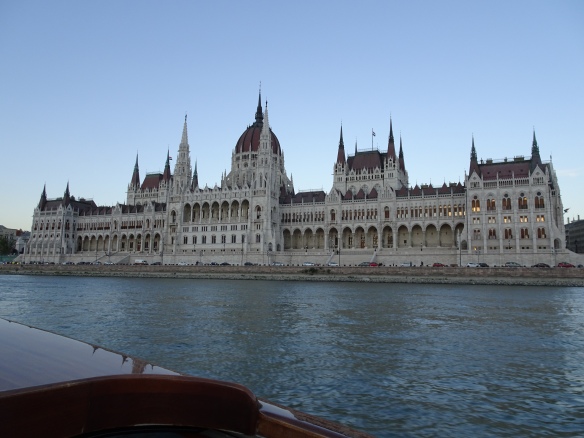
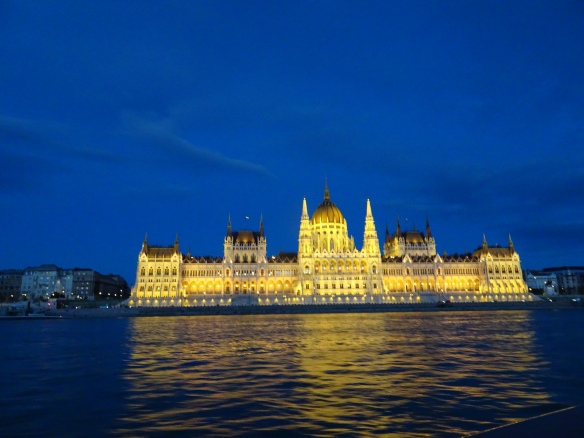
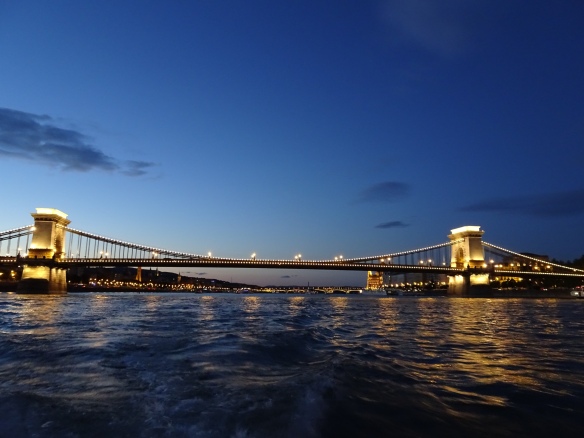
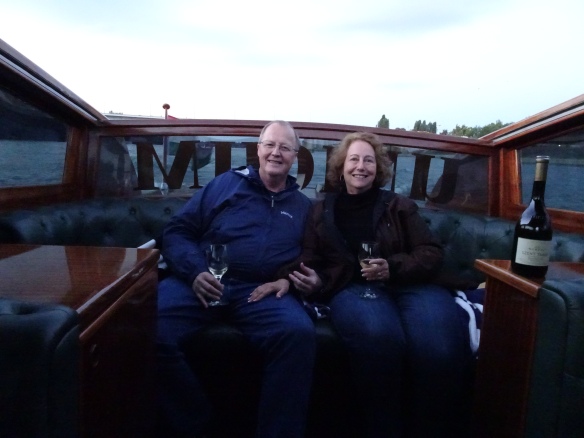
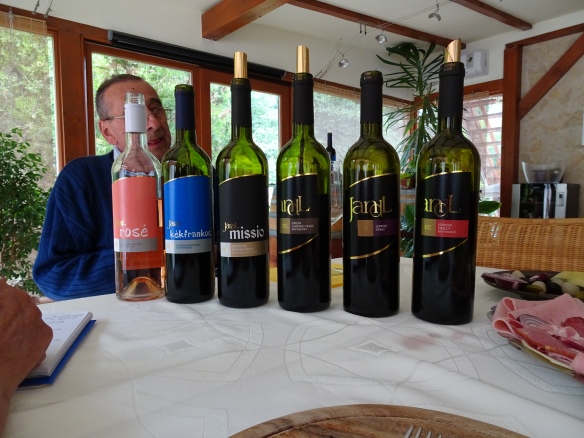
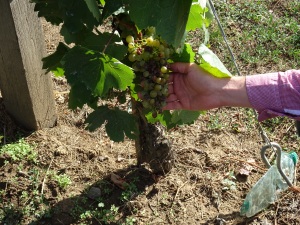
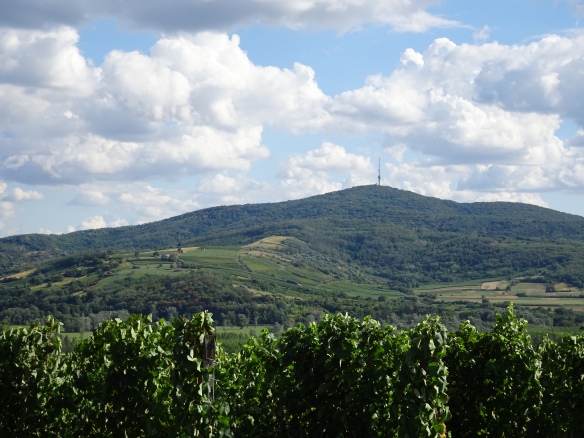
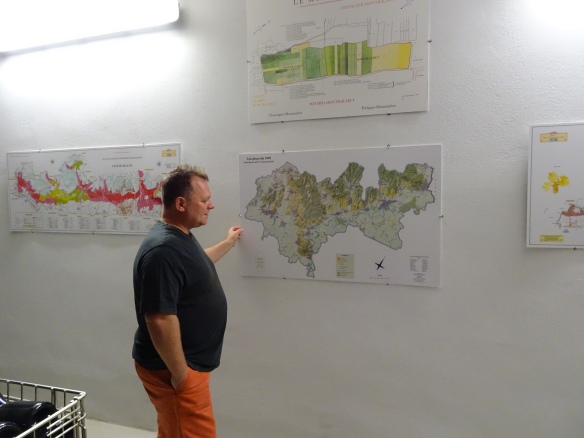
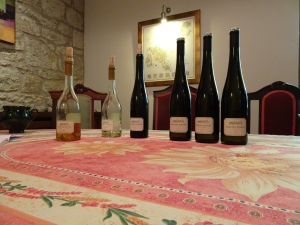
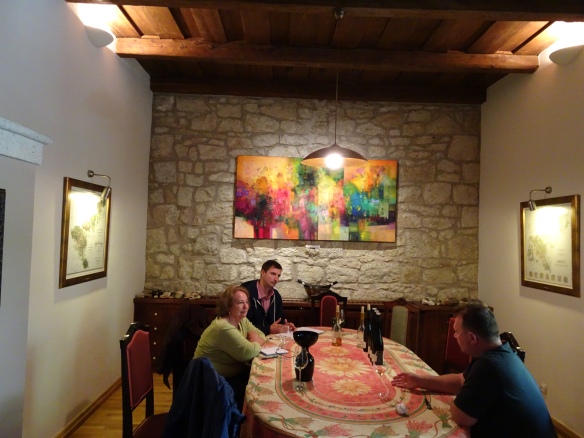
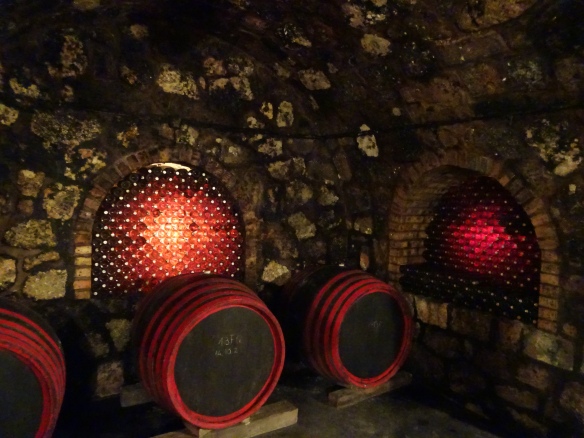
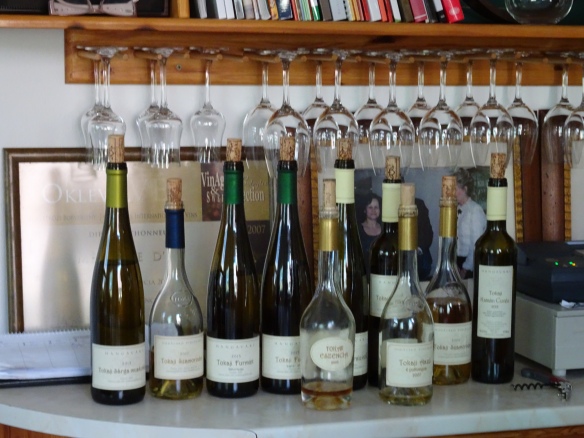
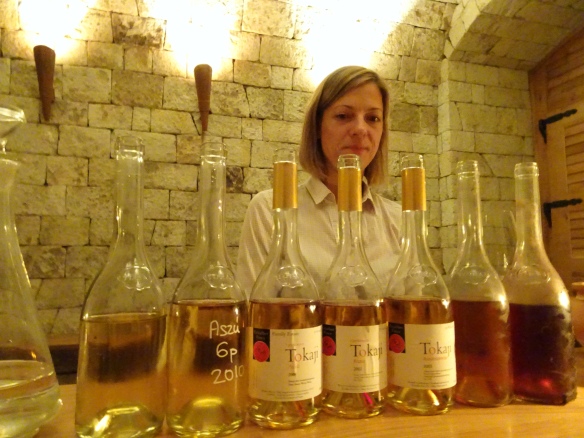

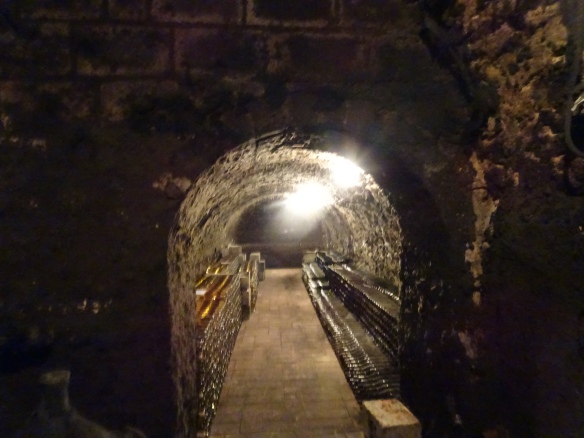
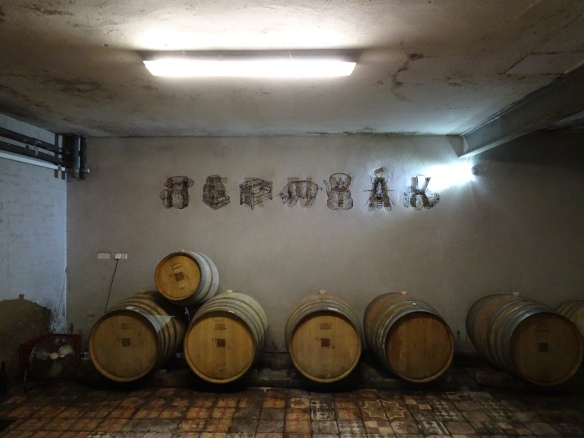

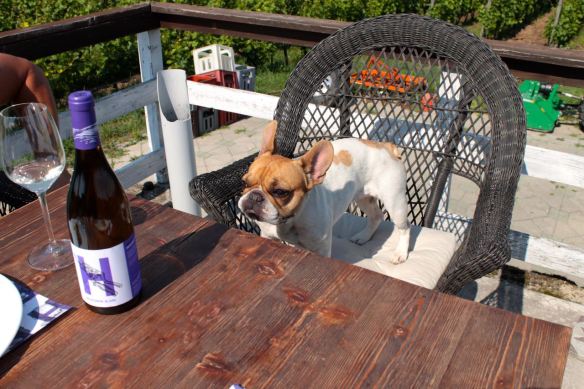
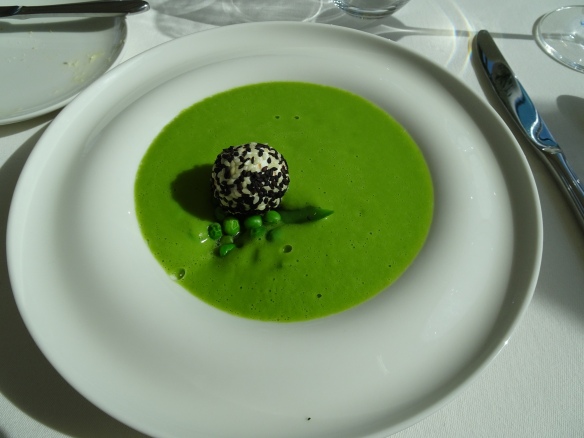
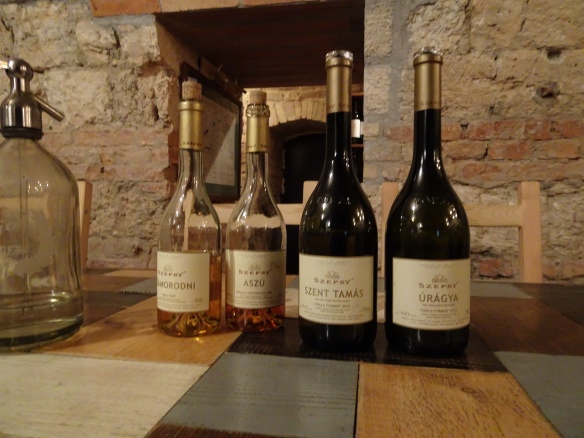

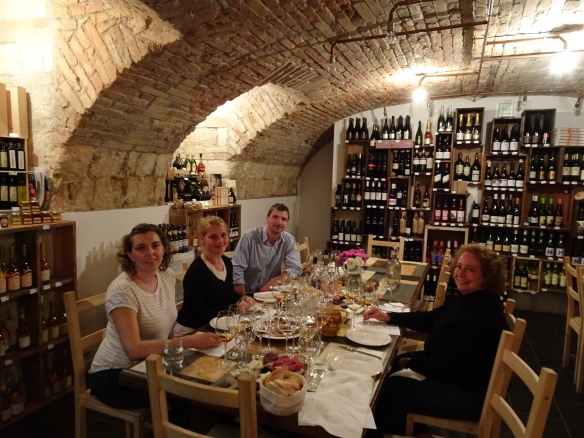
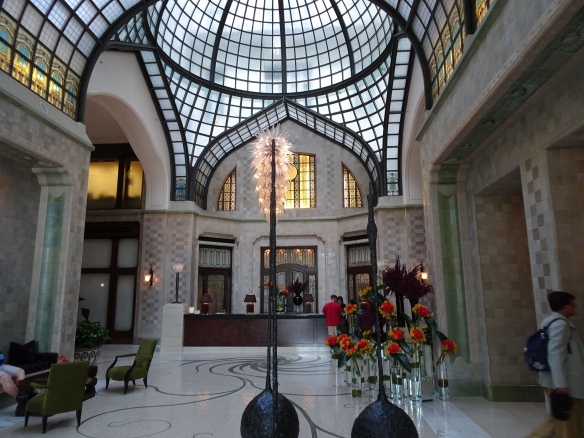
Excellent write-up! 👍
I’m still disappointed that you didn’t take your brother on the trip though! 😞
LOL! I’m glad y’all had a good time! 😀
LikeLike
Our next trip is to Provence, so you can come along on that trip!
LikeLike
Pingback: A Visit to Hungary: Tasting the Wines of Tokaj | TOKAJI KÁVÉPÖRKŐLŐ MANUFAKTÚRA ÉS KÁVÉHÁZTOKAJI KÁVÉPÖRKŐLŐ MANUFAKTÚRA ÉS KÁVÉHÁZ